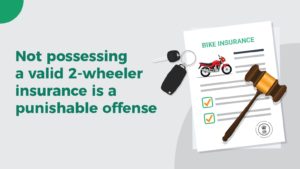
When you buy a motor insurance policy for your vehicle, do you ever consider the IDV offered by the policy?
Very few of you do. When buying or renewing motor insurance policies, the first thing which most of you consider is the premium charged by the policy. Some of you also consider the coverage offered, available riders, discounts and other aspects of the policy but the IDV is, usually, given a miss. The most common reason why IDV is ignored is because many of you don’t understand the concept and its relevance in your motor insurance policy. But ignoring IDV is a bad move. It is important at the time of a claim made under the policy. Do you know how? Let’s understand –
What is IDV in motor insurance policies?
Simply put, IDV, Insured Declared Value, is the maximum liability undertaken by the insurance company with respect to your vehicle. It represents the value of your vehicle in the eyes of the company. IDV is the maximum amount of claim which the insurance company would pay in case your vehicle is stolen or it suffers a total loss. You can call the IDV to be the sum insured of your motor insurance policy.
How is IDV calculated?
As stated earlier, IDV is the value of your vehicle as calculated by the insurance company. The company calculates the IDV based on the market value of the vehicle after deducting depreciation based on the vehicle’s age. The actual formula for calculating IDV is as follows –
IDV = the listed price of the vehicle as per the manufacturer – depreciation specified in the Indian Motor Tariff
The listed price is also called the ex-showroom price of the vehicle and it excludes the cost of registration, insurance and other loadings.
Moreover, if the vehicle is fitted with additional accessories the costs of which are not included in the listed price, IDV would also include the value of such accessories after depreciation. In such cases, IDV would be calculated as follows –
IDV = (the listed price of the vehicle as per the manufacturer – depreciation specified in the Indian Motor Tariff) + (value of additionally fitted accessories – depreciation on them)
The rate of depreciation applicable for calculating the IDV is as follows –
| Age of the vehicle | Applicable depreciation |
| Up to 0.5 years | 5% |
| 0.5 years to 1 year | 15% |
| 1 year to 2 years | 20% |
| 2 years to 3 years | 30% |
| 3 years to 4 years | 40% |
| 4 years to 5 years | 50% |
If the vehicle is more than 5 years old, the IDV is settled based on its condition, serviceable parts available in the market and a mutual understanding between the insurance company and the policyholder.
Importance of IDV
The importance of IDV is felt at the time of claim. Since it is the maximum liability undertaken by the insurer, IDV is paid in the following instances of claim –
In these three cases of claims, the insurance company pays the IDV applicable under the policy. So, having the correct IDV in the insurance policy would determine the settlement of claim and is, therefore, important.
IDV and motor insurance premium
Since IDV represents the value of the vehicle, it is directly proportional to the premium of the policy. This means that if the IDV is high, the premium would be high and vice-versa.
Choosing the correct IDV of the motor insurance plan
Since IDV determines the premiums of the motor insurance policy, many of you are tempted to opt for lower IDVs when buying the plan. You should not do so. Choosing the correct IDV is important because IDV not only affects your insurance premium, it also affects your insurance claim. If you choose an IDV which is considerably lower than the market value of your vehicle, you would end up getting a very low claim if the vehicle is stolen or completely damaged. The claim would not be sufficient to pay for a replacement vehicle and might cause a financial strain. That is why it becomes imperative to choose an IDV which is closest to the market value of your vehicle after factoring in depreciation.
That said, choosing a very high IDV is also bad. If you go for very high IDVs, you would end up paying unnecessarily high premiums for your policy.
So, be careful when selecting the IDV of your policy. It should be ideal, not more and, definitely, not less.
The next time you compare your car insurance or bike insurance policies to buy or renew your plan, make sure to factor in the IDV offered too besides considering premiums and coverage features. Having the right IDV is equally important as paying the right premium and you should, therefore, make sure to choose the most optimal IDV for your vehicle.
[xyz-ihs snippet=”insured-declared-value”]
Read more Car insurance terminologies you should know
Read more How to choose your best bike insurance policy
Read more about Common causes of road accidents and what you can do to avoid them






















